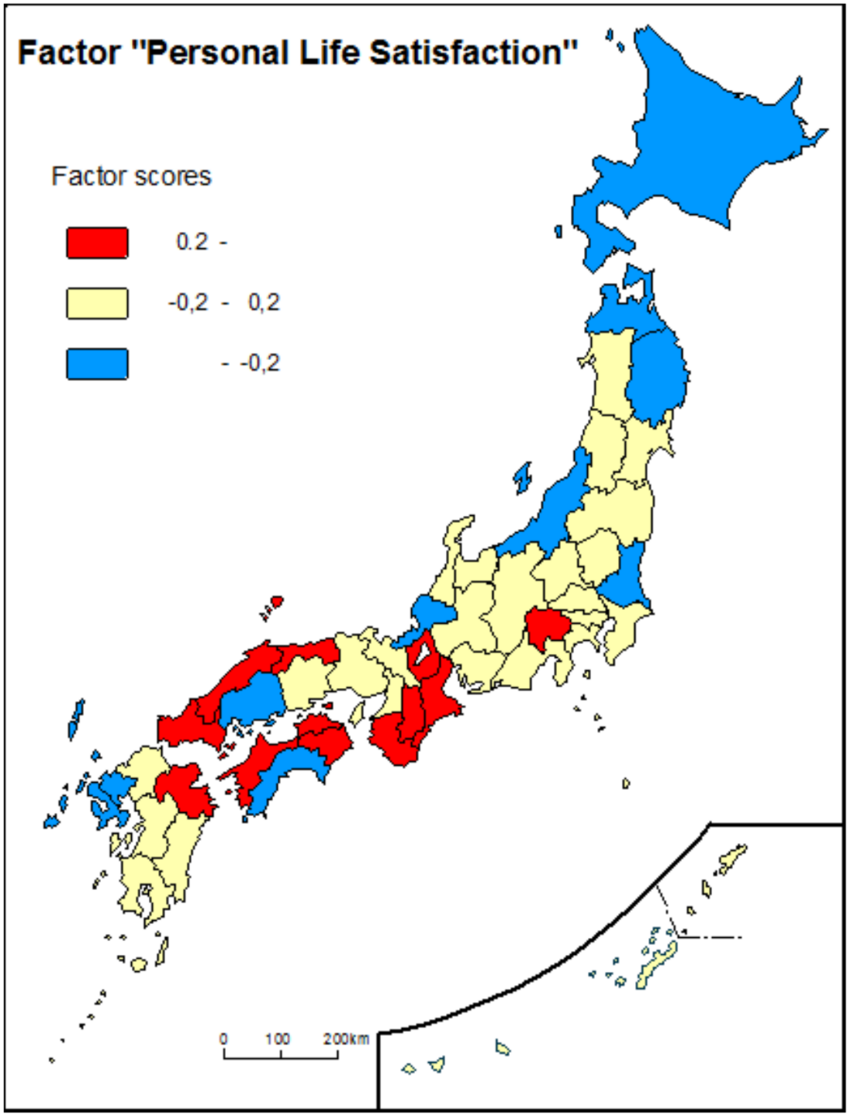Parental Well-Being in Japan: Regional Differences
If and how region matters to the well-being, in general and of Japanese in particular, remains contested: from no influence (Tiefenbach&Kohlbacher 2015), to happier rural people (Easterlin et al. 2011; Brereton et al. 2011) to those happier in urban areas (Ōtake et al. 2010; Tsutsui et al. 2009). In that context, the subgroup of parents with young children remains largely unstudied (Holthus&Manzenreiter 2017). Yet these parents have very specific infrastructural needs and desires for raising their children. This makes this group particularly important to study, and an essential group for policy makers to understand better for developing tailor-made strategies to address parental needs in their efforts to raise Japan’s fertility rate.
Research questions
- Does the region and in particular the degree of urbanization matter to the well-being of parents of young children?
- Are different dimensions of well-being showing different spatial patterns, and how can we explain such differences?
- What are the consequences for policy-makers aiming to raise the fertility rate?
Data and methods
- Data: 2012 Parental Well-being Survey Japan (principal investi-gator: B.Holthus; funding by DIJ Tokyo and Benesse Corporation). Quantitative, nationwide, representative survey of 1,031 fathers and 1,103 mothers.
- Spin-off from the 2014-2017 DFG-funded projecton parental well-being in Japan and Germany.
- Use of 7-dimensional model of parental well-being: from personal aspects (e.g. health, income) to partnership and network related aspects to family policy satisfaction.
- Classification of respondents’ residential municipalities into five categories by degree of urbanization.
- Statistical methods: variance analysis; multiple regression analysis; factor analysis.
Findings
- Demographic and socio-economic attributes of parents with young children (e.g. education levels, household income) show a linear increase from rural to urban.
- Workplace work-life balance provisions show an increase from rural to urban areas.
- No clear correlation is found between overall life satisfaction and degree of urbanization. This is most likely due to different aspects of well-being showing contrarious spatial patterns, cancelling each other out.
- Satisfaction with personal areas of life shows a weak tendency to be higher in southwestern Japan (see map).
- Satisfaction with aspects of family policy (e.g. childcare infrastructure) is significantly higher in rural than urban areas.
Discussion
- The capacity problems for expanding childcare centers could contribute to the lesser satisfaction with infrastructural family policies in urban areas.
- Contributing elements to regional differences in satisfaction with parents‘ personal lives should not be sought in any one area. Rather, a combination of social, economic, and psychological aspects such as the „sunshine hour hypothesis“ (cf. Schaede 2013) should be considered.
Conclusion and outlook
- Region partly matters to parental well-being in Japan. Significant spatial patterns can be found by splitting well-being into different dimensions.
- Severe socio-economic structural problems not withstanding, rural areas do not generally score worse than urban areas when it comes to parental well-being.
- Pro-natalist policy-makers should concentrate their efforts on parents in urban rather than rural areas.


